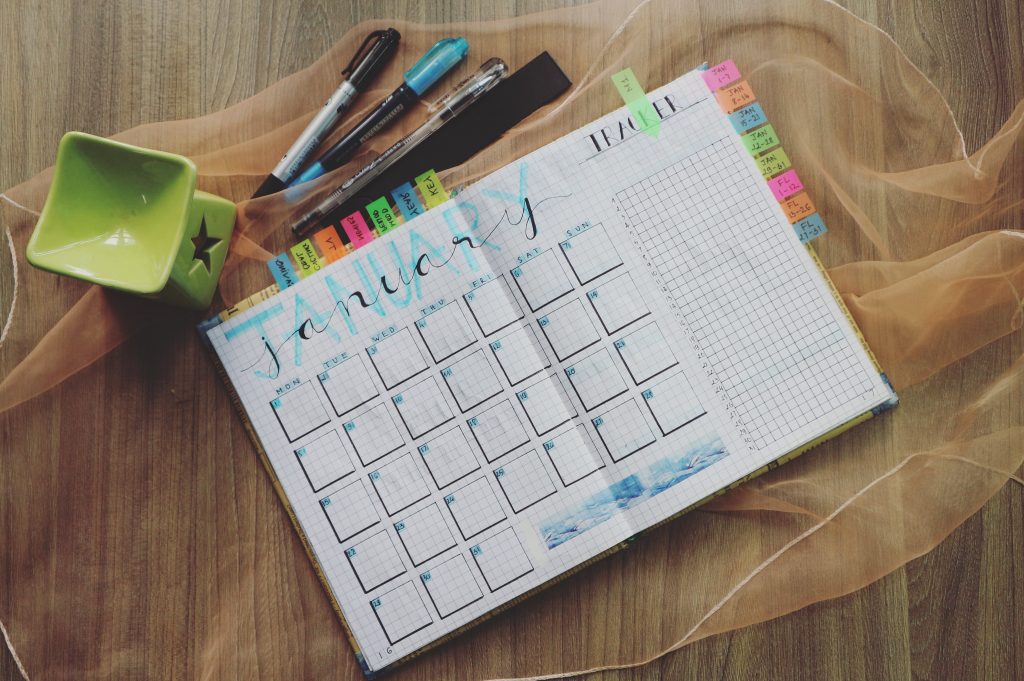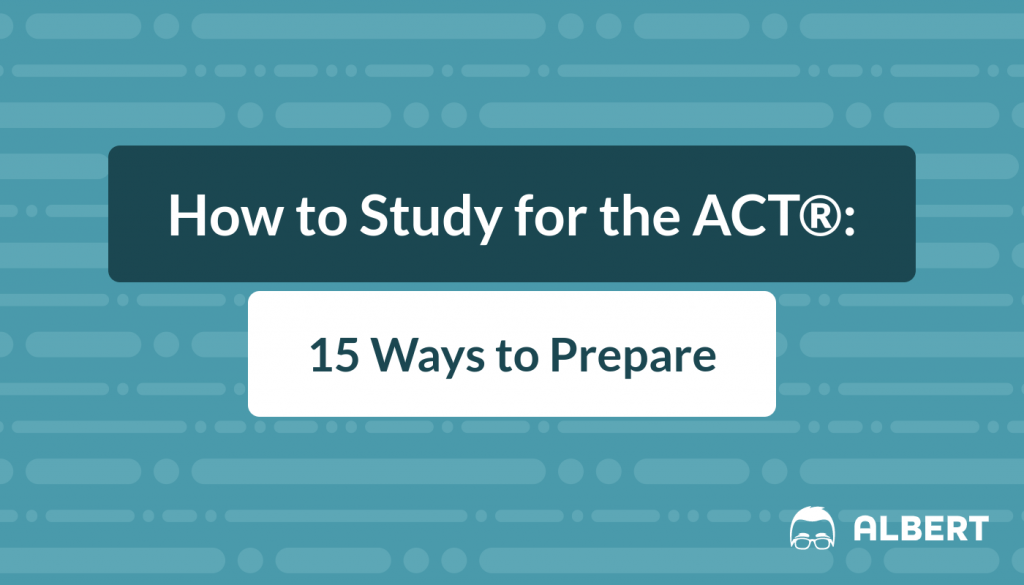Introduction
As you know, the ACT® is an exam designed to test what you’ve learned and the skills you’ve acquired throughout your many years in school. That means you’re going to face a lot of challenging material, and your ACT® can play a big role in whether or not you get into the college of your choice. Therefore, you need to know how to study for the ACT® to ensure you get the best score possible to open up those college opportunities. Here are 15 ways to help you accomplish just that.
Step One: Take a Practice Test
This may seem like we’re jumping a little ahead of the game, but by taking a practice test right away, you’ll be able to see where you are struggling and where you’ve already got the information down. If, for example, you already have a great understanding of math, you don’t want to spend a lot of time studying it. You’ll want to focus most of your time on your weak areas when it comes to studying. A practice test will help you locate those weaknesses.
Step Two: List Your Weak Areas
Now that you’ve taken the practice test you’ll be able to see what your weak areas are and make a plan to address them thoroughly before test day. List out your strength and weaknesses on a piece of paper. If any of the areas on your weak list are a surprise to you, then you may need to spend even more time on those right now. If you can identify why you struggled on the ACT® in a subject you’re typically good at, that can boost your score significantly when you address it. For example, if you thought you were great at math but your practice test score was low you need to evaluate what about the ACT® math caused these issues.
Step Three: Trade Lessons
One of the best things you can do to get ready for your test is to find a buddy that is also studying for the ACT®. You can choose to work with one friend or even form a group. Take the time to share and discuss each person’s weak and strong areas, so that you’ll be able to assist one another efficiently. You should take turns teaching lessons and demonstrating problems that align with your own strengths at first, then try to demonstrate problems that fall into your weaker categories. Through this process, every member of the group will likely become more well-rounded test takers and, hopefully get more questions right.
Step Four: Create a Study Schedule

You’ve probably been told to create an ACT® study schedule before, but here are some things to keep in mind. Your study schedule needs to be easy to follow and realistic. If you set up a schedule in which you’re going to study four hours every Saturday, is this a realistic goal for you? Try to place your study time where you’re productive and less likely to be busy or distracted. Don’t try to be overly ambitious. Instead, set aside 20-40 minutes each day to study a small portion of the test. You’ll actually be able to retain more information and you’ll be more likely to stick to the schedule. For longer study sessions, be sure to take a break every hour to stretch and refocus.
Step Five: Practice Your Speed
Completing your ACT® sections within the time limits can be one of the greatest challenges students face on test day. Make sure you’re familiar with the test day schedule, and are practicing with this time limit in mind. It’s great to take it slower when you’re first learning or reviewing the material, but beyond that point you want to be conscious of how long each question is taking you. Divide the number of questions in each section by the time limit to get an idea of approximately how much time an average question should take.
Step Six: Learn to Use Your Time
While some people are naturally speedy test takers, that typically isn’t the case. For the rest of us, we need to figure out how to use the time we have efficiently to get the highest score possible. You need to balance the need to work carefully against the time limit in order to succeed. Remember, there is also such thing as going too fast through your ACT®, so be sure that you aren’t training yourself to be careless. If you do have extra time after the test, use it to go back through your answers, make sure you’ve filled out the answer bubbles correctly, and try some of the tougher questions a second time.
Step Seven: Find a Study Book or Online Resource
Right now is the perfect time to gather resources that can help you score higher on the ACT®. You can start with a complete ACT® prep book if you’d like, or you can find books that are specifically geared toward your weakest areas. This approach can sometimes save you money and time. It’s a good idea to go to a book store and actually flip through some of your options. Look for strong explanations and quality practice questions that mirror your practice test.
Step Eight: Learn the Instructions

You want to make sure that you know all of the instructions for your ACT® test to reduce your stress levels on test day. You will be given time to read them over, but you don’t want to have to be flipping back to the instructions page during the test. These instructions are readily available on the ACT® website. Believe it or not, knowing the test well can help keep you calmer on test day, which can translate to better results.
Step Nine: Check Out the ACT® Website
ACT®.org, the test-makers, maintain a website that can be a very helpful tool for students. Just reading over the materials there will familiarize you with the mindset of the organization and you’re sure to find helpful tips and practice materials. This is also where you’re going to register for the ACT®, so be sure to check in early and often while you are choosing a test date. You don’t want to procrastinate, as the ideal test location and time might fill up while you are waiting around. There are free and paid resources connected to the site for you to add into your study sessions.
Step Ten: Know the Sections
There are four different required sections to the ACT® test followed by the optional essay portion. You need to take the English, Mathematics, Reading and Science sections, which will take you approximately 2 hours and 55 minutes in total. You’ll have time to take a break and get up from your seat in between sections, so you’ll be at your testing site a bit longer than 3 hours. Reminder: The English test consists of 75 questions completed over 45 minutes, Mathematics is 60 questions in 60 minutes, and Science and Reading are each 40 questions in 35 minutes. If you decide to take the writing test you’ll have only one prompt and 40 minutes to complete it.
Step Eleven: Learn to Read for Content Quickly
One of the best tools you could possibly have is skills at speed reading. Now, true speed reading is difficult to master, but if you take the time to practice reading quickly for information it can really pay off on your test day. After all, even in math or science sections of the test you have to read the question and the possible answers before making your decision. The faster you can read (without missing anything) the more opportunities you’ll have to score points. Make an effort to read new types of magazines, articles, and books leading up to the test. If you’re better read you’ll be able to adapt to different passages more smoothly during the ACT®.
Step Twelve: Reverse Engineer the Questions
If you’re looking to get more complex questions right you need to make sure that you understand the questions well. Read through the question and try to predict what the answer will be. Then read through the answers and see if any of the answers match yours. This can help you get your own ideas in place before you are tempted by any incorrect answer choices. If the choices don’t match your answer, try going through each option and then re-reading the question. See if anything stands out. You want to disassemble and analyze the answers and the question. This will help you get to the answer. By practicing this skill you’ll be ready to go and much faster when it comes to the actual ACT®. As you practice, you’ll also notice tendencies and patterns in ACT® style questions that you can use to make better answer choices.
Step Thirteen: Learn to ‘Guess’ Properly
You’ve probably been told by teachers before that you don’t want to guess on your tests. This is actually not true when you’re taking the ACT® because the test does not include an additional penalty for incorrect answers. You are not taking on any additional risk when you guess. It’s helpful to improve your guessing strategies, so that you can increase your odds of getting more of these questions right. Rather than purely guessing, try to eliminate 1 or 2 answers that seem wrong to you. Just by taking out one incorrect answer choice per guess, your average accuracy should increase from 25-33%, and on the ACT®, every correct answer counts.
Step Fourteen: Prep for the Big Day
You want to make sure that you prepare for every aspect of your test day. You’re sure to feel some stress, so make sure that you continue to exercise and eat well leading into your test day. Get a good night of sleep, and try some relaxing activities the day before the test. If you’ve studied hard, then try to trust yourself to do the best that you can, since worrying will not help you get more questions right.
Step Fifteen: Be Prepared the Day Of
Make sure on the day of the test you have absolutely everything you need. You should have a few #2 pencils, some quality erasers and an approved calculator. Double-check everything to make sure your tools are going to work for you. The math section can be completed without a calculator, but you want to give yourself every possible advantage on test day. Once you’ve completed your test, plan some fun and relaxing activities to celebrate.
Conclusion
Hopefully these ACT® tips are helpful as you get ready for this challenge. Studying for this exam takes a lot of hard work and dedication, but the payoff can certainly be worth it. Don’t get discouraged, and remember that even if you fall a little short of your score goals, the ACT® doesn’t define you or your college decision. It is only one part of your profile as an applicant, and there are a ton of great colleges out there for a wide range of ACT® scores. Study hard, give your best effort, and when in doubt, guess!
Looking for ACT® practice?
You can find thousands of practice questions on Albert.io. Albert.io lets you customize your learning experience to target practice where you need the most help. We’ll give you challenging practice questions to help you achieve mastery of the ACT®.
Start practicing here.
Are you a teacher or administrator interested in boosting ACT® student outcomes?
Learn more about our school licenses here.








